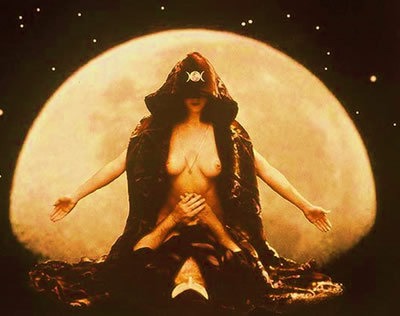In Celtic mythology, there is a special relationship between the king of the land and the goddess representing the land. Examples included the goddesses, Eriu, the Morrigan, Macha, and Mebd/Maeve. The king is ritually married to the land/the goddess, and the fertility of the land depends on the king’s worthiness and his fidelity to his vows to the goddess (i.e., to be just, etc.) This marriage is called the Sacred Marriage or the hieros gamos.
The Sacred Marriage represents the union of the Divine Feminine and the Divine Masculine or their mortal representatives. It is expressed ritually in the Wiccan Great Rite, which may be performed symbolically or in actuality. The Sacred Marriage of the Neo-Pagan Goddess and her masculine Consort is an affirmation of life and sexuality. The union of the Goddess and her Consort symbolizes the union of masculine and feminine, spirit and matter, heaven and earth, and death and birth.
In the Neo-Pagan Mythos, the hieros gamos cannot be understood separately from the death of the God that follows the Sacred Marriage. (See “Death of the God” below.) These extremes of human experience—intense joy and intense suffering—are inextricably intertwined. Together, they move us toward a greater understanding of the immanence of divinity in the material world.



